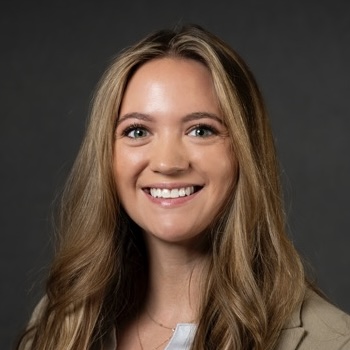Every year on Thanksgiving, kitchens across America, from individual apartment units to commercial kitchens and multifamily buildings, shift from calm to controlled chaos. Between overloaded appliances, rushed meal preparation, and distracted cooks, the holiday puts both residential and commercial environments under pressure. What is meant to be a day of gratitude and togetherness consistently becomes the leading day for cooking fires, and the risks increase in settings where many people live in close proximity. In apartment buildings, senior living facilities, healthcare campuses, and commercial dining operations, one small incident can quickly affect multiple units, shared corridors, and essential services. Thanksgiving may be seasonal, but fire risk is not, and the need for strong fire protection applies everywhere people live, work, and gather.
According to the National Fire Protection Association (NFPA), Thanksgiving experiences nearly three times the average number of cooking fires compared to any other day of the year. During laughter and holiday traditions, it is easy to forget that fire safety is not seasonal, and the risk does not take a holiday.
At National Firestopping Solutions, we believe that protecting lives begins long before an incident ever occurs. In the spirit of prevention, here are the most common holiday fire hazards and how active and passive fire protection work together to keep residents, facilities, and entire buildings safe.
Common Causes of Thanksgiving Fires
Thanksgiving introduces unique hazards into kitchens and throughout apartment units. The combination of high heat, distractions, and heavy appliance use makes it a perfect storm for accidents.
- Cooking Fires
Unattended stoves, grease buildup, boiling over pans, and deep fryer mishaps remain some of the top causes. Even a quick distraction can give a fire the time it needs to start. - Candles and Decorations
Seasonal decorations, especially dry leaves, greenery, and centerpieces, often sit too close to open flames. Candles offer ambiance but also add unnecessary risk in a multi-unit environment. - Overloaded Outlets
The slow cooker, the roaster, the warming tray, the air fryer, and the coffee maker all plugged into one strip can easily overload a circuit. Damaged extension cords and overused outlets are responsible for hundreds of holiday electrical fires every year.
These hazards highlight a truth we emphasize year-round. Fire prevention starts with awareness and preparation.
Preventive Fire Safety Tips for a Safer Holiday
A few simple habits can significantly reduce the chance of a Thanksgiving disaster:
- Stay in the kitchen when frying, roasting, or broiling. If you step away, turn the heat off.
- Avoid overloading outlets and replace frayed or damaged cords immediately.
- Keep a fire extinguisher nearby and make sure everyone knows how to use it.
- Deep fry turkeys outdoors only, on flat level ground, far from buildings and vehicles.
- Keep pathways and exits clear for quick evacuation if needed.
Preparedness is not complicated. It is intentional.
Active vs Passive Fire Protection: The Two Layers That Keep You Safe
Fire safety never relies on a single system. It depends on two distinct yet equally critical layers.
Active Fire Protection
These systems are designed to respond during a fire:
- Alarms
- Sprinklers
- Smoke detectors
Active fire protection detects, warns, and suppresses after ignition occurs.
Passive Fire Protection
Passive measures are built into the structure:
- Fire-rated walls and floors
- Fire doors
- Firestopping systems
- Dampers
- Fire-rated glazing
Where active systems respond, passive systems prevent fire and smoke from spreading. This is achieved through compartmentation, containing a fire to the unit of origin long enough for safe evacuation and fire department response.
This layered approach is the foundation of modern fire safety, and it is just as important in an apartment kitchen as it is in a hospital, university, or commercial facility.
Why Fire-Rated Assemblies Matter, Even During Holiday Cooking
Grease, high heat, and open flames accelerate the spread and produce heavy smoke. In multi-unit apartment buildings, fire-rated barriers and fire doors play a crucial role by:
Containing fire and smoke within the unit itself- Protecting exit routes
- Maintaining safe egress paths
- Reducing property loss
- Buying valuable time for response and evacuation
It’s a layer of safety most people never see, but everyone relies on it.
And as we like to say: If dinner goes up in smoke, the firestopping shouldn’t.
A Quick Holiday Health Check for Rated Barriers
Whether in your apartment or in a facility, take a moment before the holiday rush to ensure your passive systems are performing as intended:
- Inspect Fire Doors
- Make sure they’re not blocked, decorated, propped open, or damaged. Fire doors must latch and operate properly to maintain their rating.
- Check for Unsealed Penetrations
- Gaps around pipes, wires, and cables in fire-rated assemblies should be sealed with listed, tested firestop materials, not general-purpose caulk or makeshift repairs.
- Schedule Professional Inspections
- For commercial kitchens, multifamily properties, healthcare facilities, and other high-risk environments, annual inspections ensure continued compliance with IBC and NFPA standards.
Passive protection only works when maintained. Small gaps can compromise an entire system.
- For commercial kitchens, multifamily properties, healthcare facilities, and other high-risk environments, annual inspections ensure continued compliance with IBC and NFPA standards.
- Keep Safety on the Menu This Thanksgiving
- With thoughtful prevention and a strong passive fire protection strategy, both homes and hospitals can enjoy the season safely.
Let’s make sure the only thing getting roasted this Thanksgiving is the turkey!
.png)
